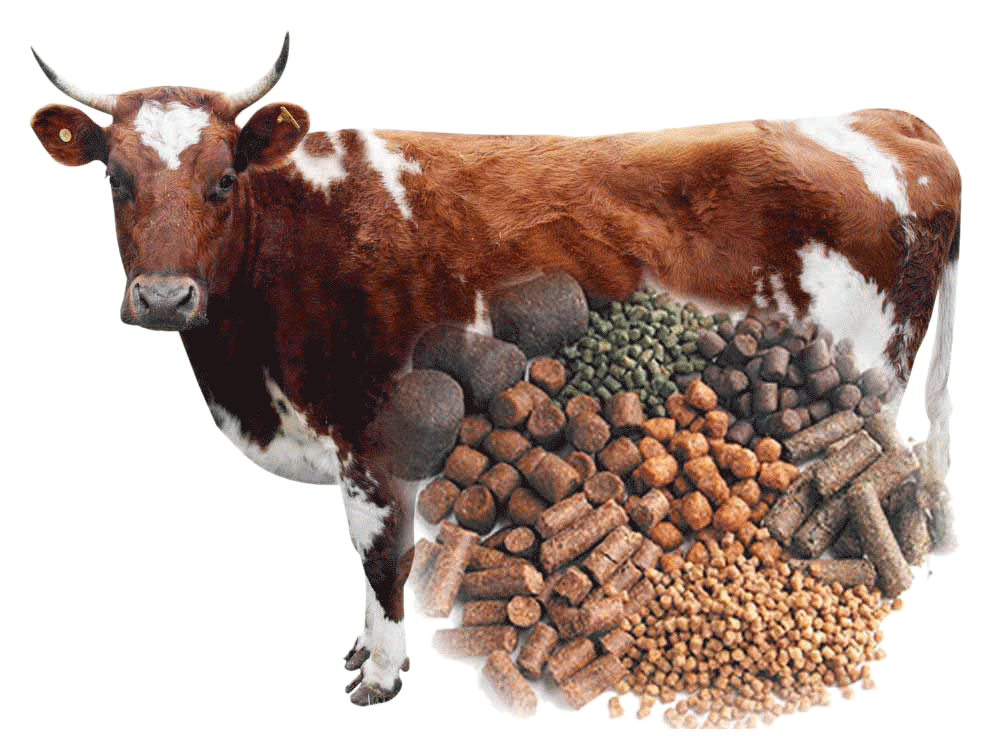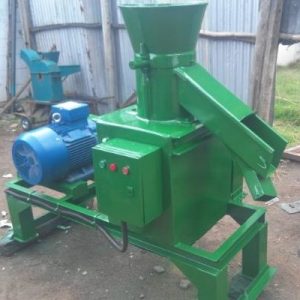Cattle Feed Pellets Making Guide
What is Cattle Feed Pellet
- Cattle feed pellets are a kind of compound feed and mainly made from various raw materials such as, cereals, seed from oleaginous crops and legumes, forage and dried beet pulp and additives, such as, vitamins, minerals, chemical preservatives and other essential micro-ingredients
- They are formulated according to the type of cattle
- The cattle feed pellets are high in energy and balanced for protein, vitamins and minerals.
Cattle Feed Pellets VS Traditional Feed
In the eighties researchers found that cows consumed the pelleted feed more rapidly than other forms of feed like coarse mix, crumbles and meal. Compared with traditional cattle feed, cattle feed pellets show more advantages. Cattle feed pellets can satisfy the nutritional need of cattle and help cattle gain weight fast, and produce more milk than traditional feed like chopped straw. As we all know, powder of chopped straw can stack in the cattle’s stomach and caused cattle tumor and indigestion diseases. However, with pelleted shape, the cattle feed pellets are with no such problems, and they contain more nutrition. Cattle feed pellets can not only improve the cattle performance but also improve the ratio of feed pellets conversion.
Advantages of dairy cow feed pellets
Besides easy storage and cost less, the advantages of pelletizing also include the following aspects:
1. Quality assured: ingredients to be targeted directly at your requirements and ensure the accuracy of each ingredient time after time.
2. Nutritionally balanced ration: meets the protein, energy and mineral requirements for optimum growth and feed conversion
3. High energy: rapid weight gain and efficient feed conversion
4. Low dust: reduced inhalation of dust by people and cows which makes a safer, healthier and more pleasant work place.
5. No ingredient separation: even nutrient blend received by cows
6. No further processing required: pellets are ready for consumption; no extra labor to roll or mix rations.
7. Better starch utilization: up to 15% more and increased milk production per kilo of feed
Formulation for Home-made Cattle Feed Pellets Making Machine
According different kind of cattle, like dairy cattle and beef cattle, the feed pellets formulation is different.
♦ Dairy cattle. As dairy cattle are mainly fed for their milk and the materials of feed pellets may effect the quality of milk, the feed pellets should be produced carefully and the materials of making diary cattle feed pellets should be selected strictly.
Raw materials for making dairy cow feed pellets
1. Cereals: maize, barley, oat, wheat, triticale, rye and sorghum
2. Seed from oleaginous crops: soy, flax, and sunflower
3. Seed from legumes: broad beans, field bean and protein pea
4. Forage: flours of permitted forage essences
5. Dried beet pulp.
Furthermore, the following substances can be used as appetizers in feed pellets:
1. Carob-bean, up to a maximum of 3%;
2. Molasses, up to a maximum of 3%.
Note: for animals in lactation, dry animals, and heifers from the sixth month of pregnancy, maximum daily amount of feed pellets is 2 kg/head/day.
♦ Beef cattle. People feed beef for their meat. So the feed pellets should contain enough protein to meet the demand and help beef gain weight fast.
Feed ingredients
Alfalfa, hay, barley, bermuda grass, corn, cotton, cottonseed hulls, oats, sorghum, soybeans, soybean hulls, wheat, wheat bran, meal, Vitamin A acetate, Vitamin D3 Supplement, Vitamin E supplement and so on.
How to Make Quality Cattle Feed Pellets ?
1. Crushing: crush raw materials by feed hammer mill to get fine grinded ingredients.
2. Mixing:all of the ingredients are mixed in a feed pellet blender for a period of time to get a uniform mix. Then a moist, cohesive mash was obtained at end of the final mixing.
3. Pelletizing: after mixing, the mash was delivered to the pellet mill feeder. It is fed into the feed pellet machine and then to the roller and die extruder. (Note: feed pellet better for home use) When the mash is compacted through the die, soft, moist pellets were formed. The extruded pellets have a moisture content of 16-17%.
4. Drying: the wet pellets are dried to obtain moisture content below 12%.
[fbcomments]


